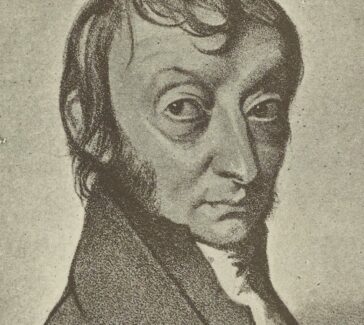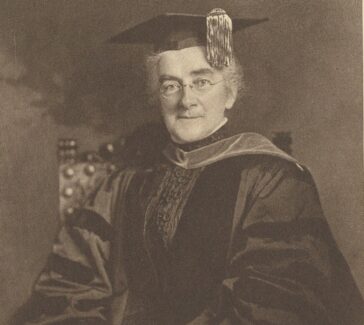Elizabeth Lee Hazen and Rachel Fuller Brown
Hazen and Brown discovered nystatin, an early antifungal medication.

A growing number of people, including recipients of organ transplants, burn victims, those on chemotherapy, and AIDS patients, are susceptible to fungal infections. We have become increasingly aware of fungi as real threats to life, as well as being among the causes of common, less serious conditions like “athlete’s foot.” Nystatin, one of the first effective antifungal medicines, was discovered in 1950 by two women scientists.
The discovery of nystatin by Elizabeth Lee Hazen (1885–1975) and Rachel Fuller Brown (1898–1980) at the Division of Laboratories and Research of the New York State Department of Health (“the Division”) was inspired by the discovery and development of penicillin (see Alexander Fleming and Howard Florey and Ernst Chain) and by the success of biochemist and microbiologist Selman Waksman in screening soil samples for antibacterial agents. Nystatin, which is now known by a number of brand names, including Mycostatin, has been used for years as an effective treatment for fungal infections of the skin, mouth, vagina, and intestinal tract.
Hazen, the Microbiologist
Hazen came to work at the New York City office of the division in the 1930s, soon after completing her doctoral degree in microbiology at Columbia University’s College of Physicians and Surgeons. Her career path was long and tortuous before her arrival at this model public-health institution famed for fostering a spirit of free inquiry and welcoming women scientists—a rarity in the early 20th century.
Born in Rich, Mississippi, 60 miles south of Memphis, Tennessee, Hazen was orphaned by the age of three. She and her two siblings lived first with their maternal grandmother and then with their father’s brother, who had three of his own children. After attending a one-room school, she enrolled in the college known today as Mississippi University for Women. She then taught high-school physics and biology for a time in Jackson, Mississippi. During her teaching days she enrolled in summer study at the University of Tennessee and at the University of Virginia.
Later she moved to New York City to attend Columbia University, where despite initial doubts cast by university authorities on her southern educational background, she completed a master’s degree in biology. She embarked on a program in medical bacteriology at Columbia’s College of Physicians and Surgeons, which she interrupted to serve in World War I in army diagnostic laboratories in Alabama and New York. After the war she worked as assistant director of the clinical laboratory of a hospital in West Virginia. In 1923 she returned to the College of Physicians and Surgeons and completed her doctorate in microbiology four years later. She then secured clinical and teaching positions at Columbia Presbyterian Hospital and at the College of Physicians and Surgeons.
Once Hazen arrived to work at New York City’s Division of Laboratories and Research in 1931, she was soon put in charge of its Bacterial Diagnosis Laboratory. In 1944 she was chosen to lead an investigation into fungi, which Waksman and others had recognized were in an age-old competition with bacteria and other microbes. Hazen then studied mycology at the College of Physicians and Surgeons and set up a collection of disease-causing fungi housed at the division that were used to identify microorganisms in specimens submitted by physicians around the state.
Using the soil-sample technique that Waksman so successfully employed, she had by 1948 identified new antifungal agents among the filamentous bacteria called actinomycetes. The talents and training of a chemist were needed at this point to look for particular substances possessing antifungal properties. The head of the division, Gilbert Dalldorf, chose one of his Albany chemists, Rachel Fuller Brown, for this job.

Brown, the Chemist
Brown was born in Springfield, Massachusetts. While she was in grade school, her family moved to Webster Groves, Missouri. When she was 12, her parents separated, and her mother moved back to Springfield, taking Rachel and her brother. When it came time for college, Brown enrolled at nearby Mount Holyoke College, thanks to a small scholarship from her high school and financial support from a well-to-do Springfield patroness. At Holyoke she majored in history and chemistry. At the recommendation of Emma Perry Carr, chair of the chemistry department and a well-known mentor of women chemists, Rachel took a master’s degree in chemistry at the University of Chicago.
Afterward she taught at a private school for girls. She returned to the University of Chicago in 1924 to take a doctorate in chemistry and bacteriology. With earnings from teaching school and as a teaching assistant in graduate school, Brown was able to repay the educational grants from which she had benefited. It became one of her lifelong objectives to afford young people the kind of educational opportunity she had enjoyed because of the benevolence of others.
Before she defended her doctoral dissertation, Brown accepted a job at the Albany headquarters of the division. Several years later she completed that last step for her PhD while back in Chicago representing the division at a professional meeting. By then she was already respected for her work on distinguishing the polysaccharides characteristic of the various pneumococci that cause pneumonia. Before the era of broad-spectrum antibiotics, the most successful treatment for pneumonia was the use of blood serums that carried antitoxins (see Paul Ehrlich). But each serum was effective against only one bacterial type of pneumonia, hence the need to distinguish the pneumococci.
Developing a Drug through the U.S. Mail
The partnership between Hazen in New York City and Brown in Albany worked, thanks to the efficiency of the U.S. Post Office in the 1940s. In her New York City laboratory Hazen cultured organisms found in soil samples and tested them in vitro for activity against two fungi, Candida albicans and Cryptococcus neoformans. If she found such activity, she would mail the particular culture to Albany in a mason jar.
At her end Brown employed painstaking solvent extractions to isolate the active agent in the culture. (This was before the days of high-performance liquid chromatography and other separation techniques.) After isolating the active ingredient Brown would send it to Hazen in New York, where it was tested against the two test fungi. If it proved effective, its toxicity was evaluated in animals.
Nearly all the agents that killed the test fungi turned out to be highly toxic in animals. Ironically, of the hundreds of soil samples sent to Hazen and Brown from around the world, the one culture that passed all hurdles was originally found in soil from the garden of Hazen’s friends, the Walter B. Nourses, and hence named Streptomyces noursei. It contained a substance that they first named fungicidin, a name that unbeknownst to them at that time, had already been used for another substance. They then renamed the substance nystatin (for New York State).
Dalldorf pressed them into making a public announcement of their discovery at a regional meeting of the National Academy of Sciences. The next steps had to involve securing a patent for nystatin, producing the drug in large quantities, and testing it in human clinical trials—for which the state had no resources. To secure a patent Dalldorf turned to the Research Corporation, which in those days performed legal services for university and public-sector scientists.
E. R. Squibb bought the rights to the patent, conducted clinical trials, and licensed the production and marketing to a wide variety of drug companies. Royalties from these activities were funneled back into the scientific world by the Research Corporation via the Brown-Hazen Research Fund, which gave grants to researchers in the life sciences during the life of the patent.



